Aries Cerat preamplifiers compared – Incito S and Impera Reference
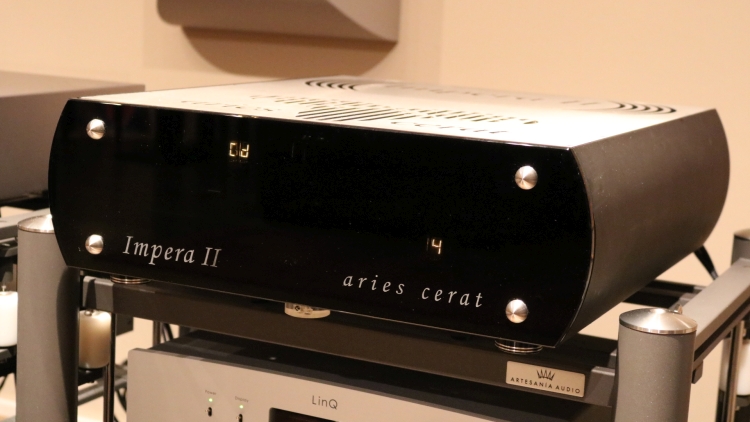
Technical Q & A
HFA: The Impera model that I am reviewing requires a voltmeter. Does the current Impera have an internal bias display like the Incito S?
Stavros: Yes, four-position, measured plate voltage, and bias of the E280F for both channels.
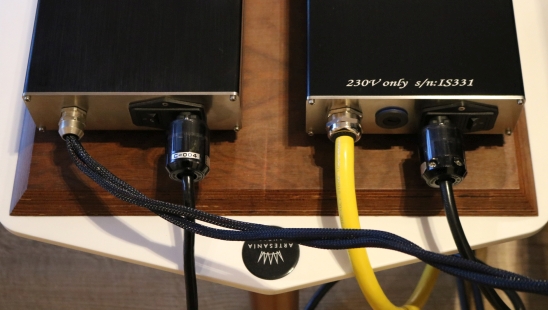
Above left: Impera Reference power supply; right: Incito S power supply
HFA: How does the move from the blue hook-up wires inside black mesh to the detachable yellow umbilical between power supply and preamp affect the sound? (see the image of the current Impera model below)
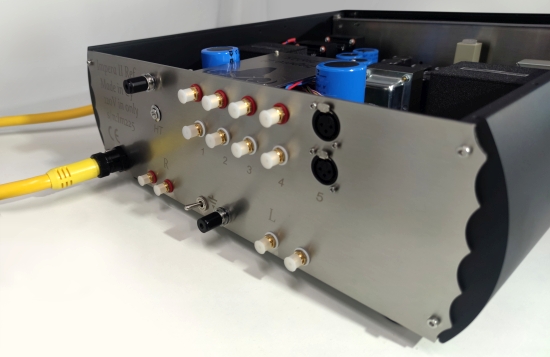
Stavros: I would say it is a negligible difference. If anything, in theory, the thicker wire in the yellow umbilical is better.
HFA: What are the gain stage tubes: the E280Fs or the Inverted Triodes? If the latter, then why are we adjusting the bias on the E280F’s socket?
Stavros: The E280F provides the gain and drives the IT in the output stage. It also provides biasing to the output stage. So you adjust the E280F but also indirectly adjust the IT as well.
HFA: What is the Inverted Triode brand and type? Are they NOS or still made? Are replacements costly?
Stavros: We cannot disclose info on this. We provide the tubes and they are relatively cheap. They need frequent replacement and luckily they are not expensive.
HFA: Does the addition of XLR inputs and or outputs affect the sound of the single-ended inputs and outputs?
Stavros: It does indeed. Adding a true XLR input is done with the use of an input transformer. So, SE is better as you have no conversion. To add an XLR output, we use a different output transformer which is not SE out but balanced out. Here, there are only small differences but the SE version of the output transformer is superior. The RCA inputs are connected directly. Only the XLR inputs go through
the conversion input transformers.
HFA: Ok, so adding XLR outputs is not recommended as this also affects the RCA outputs (that use the same, altered output transformer). When talking about adding an XLR input, however, does adding a single XLR input also affect the sound of the RCA inputs?
It is recommended to order the Impera with the XLR version of the output transformer only if you use XLR only to the power amp. If you are going to use RCA, it is better to order the SE version as this is superior with SE connections.
HFA: given the difference in gain between the Incito S (low gain) and the Impera Reference (high gain), I wondered how adjusting the output gain of an Aries Cerat preamp affects the sound. Does a lower gain result in a more relaxed, less spritely sound? Or vice versa, perhaps? As I understand it, you are not using an L-pad or resistors for that matter but less or more windings on a transformer could still have more or less of a hysteresis effect, right?
Stavros: This is made with a differently designed output transformer, sometimes with a completely different winding technique and core material. So, it is not an oranges to oranges type of comparison. For example, with the Incito S, the lower gain is preferred sometimes, even though it is the same winding tech and core, but a higher step-down ratio. The low gain sounds a bit more saturated, the high gain sounds a little more open. With the Impera Ref, however, we have OPT that has very different technology. Between them, so this is not directly comparable. The version you have is excellent, it has a bifilar winding 1:1 of course as all bifilar are. We replaced that OPT with a different core and tech for reasons other than sound quality. We recently widened the optional choices we have for the Impera, with the addition of some low and medium-gain versions. These use higher grade nano cores but are not bifilar. In a way, what you lose with the non-bifilar winding, you gain with the nano core. We have developed these additions only recently.
HFA: It’s interesting what you mention in terms of saturation versus openness with respectively low gain and high gain. Between the low-gain, yellow cable, Incito S, and the high-gain, hookup wire, Impera Ref, I hear more saturation and warmth with the Incito and a more incisive and more expressive sound with the Impera. Now, I wonder how much of this is induced by the gain difference and the cable.
Stavros:
The difference with the Incito S between low and high gain is very small. It is 1/20 of the difference between Incito S and Impera. You can only notice the difference of the two versions if you switch them in seconds in AB comparisons, and mostly it will be unnoticed. The Incito S and Impera are very very different designs. They share no common parts or topology, other than the E280F tube. The Inverted Triode is the key aspect of the design. The difference in topology, parts, and the Inverted Triode vs any other triode are several magnitudes higher than a difference in the cables used throughout the design.
HFA: I understand the reasoning behind choosing Nixie Tubes. Does enabling the Incito S bias display incur a reduction in sound quality?
It does not have an effect. In any case, for users in doubt :), the bias display can be switched offline . There is a switch that disconnects the auto probes when not in use.
HFA: given the lengths gone in order to minimize interference, how are IC’s that drive the input- and volume level sections isolated?
Stavros: The ICs control relays, so they are not in the signal path. The relay contacts that are used
have lower resistance than a common connection, like an RCA plug for example.
HFA: To clarify, I was elaborating on the principle of using Nixie tubes rather than IC-driven LED displays or other displays to avoid switching- or HF noise, and I wondered if the input- and volume IC’s do not cause any issues that need to be counteracted. And if so, how this was done.
Stavros: The LED modules themselves are not noisy, the driving circuits are. Usually in all industries, the LED displays are driven by an IC that runs them in series and in several Khz range and this produces noise. If you drive numitron tubes (Nixie Tubes) the same way (with switching ICs) you will still have
noise. So the display is not responsible, the driving circuits are. We recently changed to some LED displays (as numitrons are getting scarce) but the difference is that we use a special kind of driving circuit, that does not drive the segments in series and in switching mode, but with a parallel drive. This is a much more complicated and expensive way to do it, but it is worth it.
HFA: What is the rationale behind not having any buttons on the preamp front panels? The DAC conveniently does have input selection. Why not the preamps?
It was simply a design choice, made back then when I started designing our brand. Unfortunately, we don’t have a provision for front panel switches. For users that worry about misplacing the remote, we provide extra remotes at a cost (some keep an extra remote on their rack at all times:).
The Incito has the 5AR4 rectifier tube in the main chassis but how and where does the rectification take place with the Impera Reference?
Stavros: It’s solid-state in all four high-voltage PSU’s.
Videos on the Hifi-Advice YouTube Channel
Aries Cerat Helene and Incito S preview
HFA visits Callas Audio
HFA Front Page
External Links
Distributor for the BeNeLux: Ultisone
Dealer for Belgium and Luxembourg: Alpha High End
Manufacturer’s website: AriesCerat
Dealer for the Netherlands:
www.callas-audio.nl
Lelystad 8241AK
info@callas-audio.nl

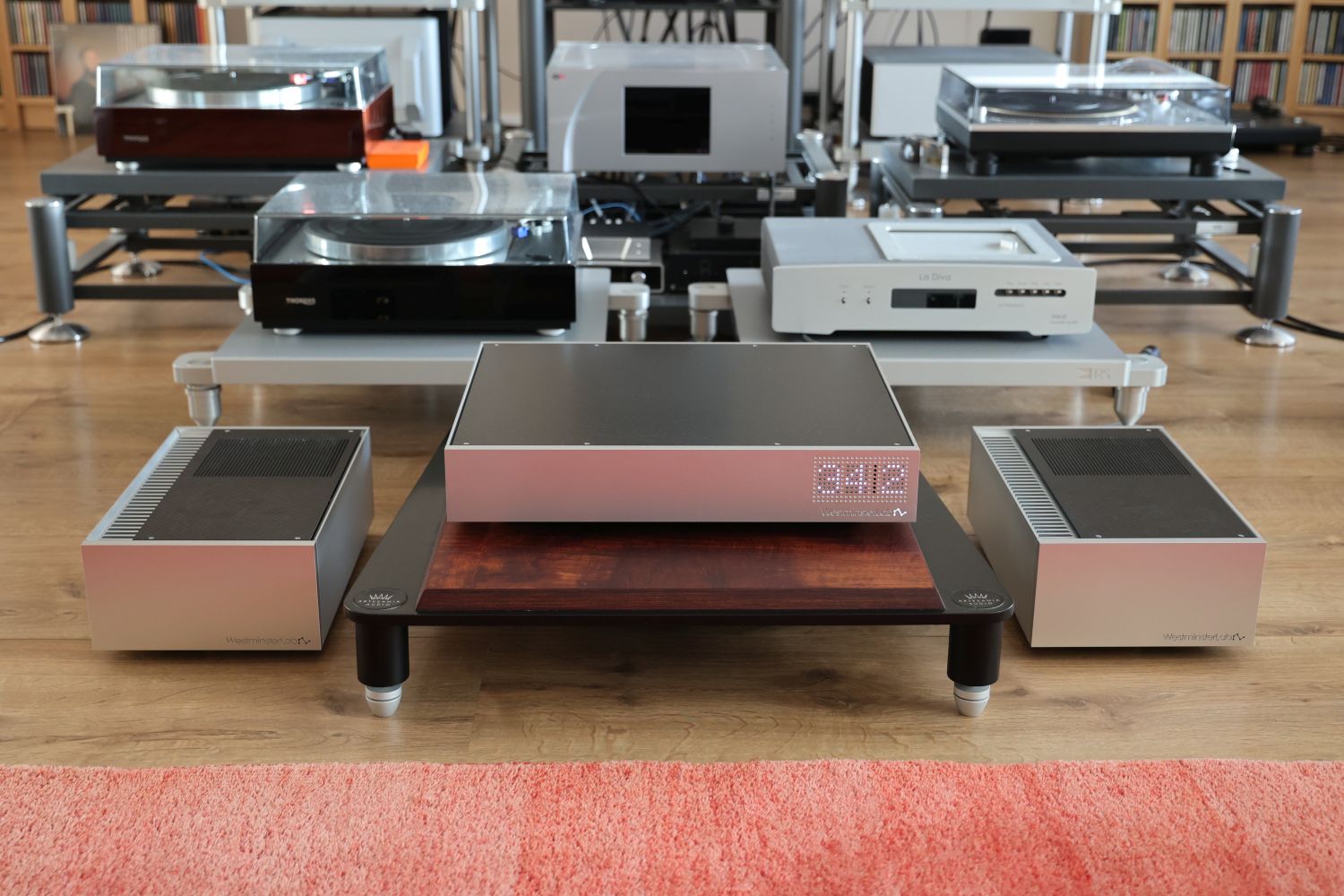
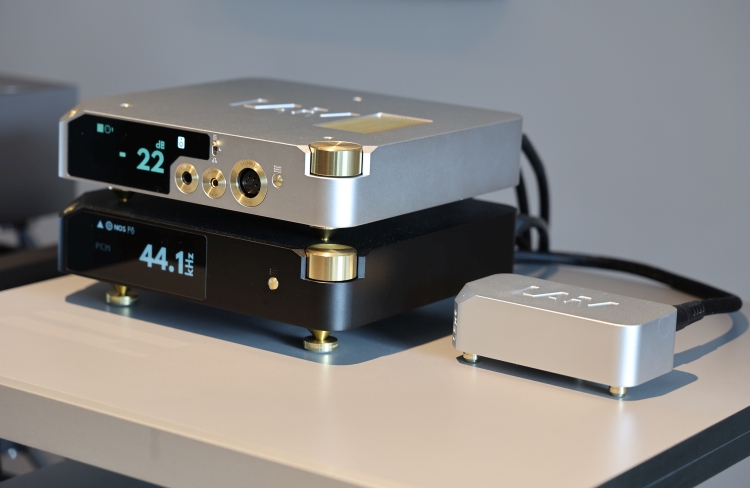
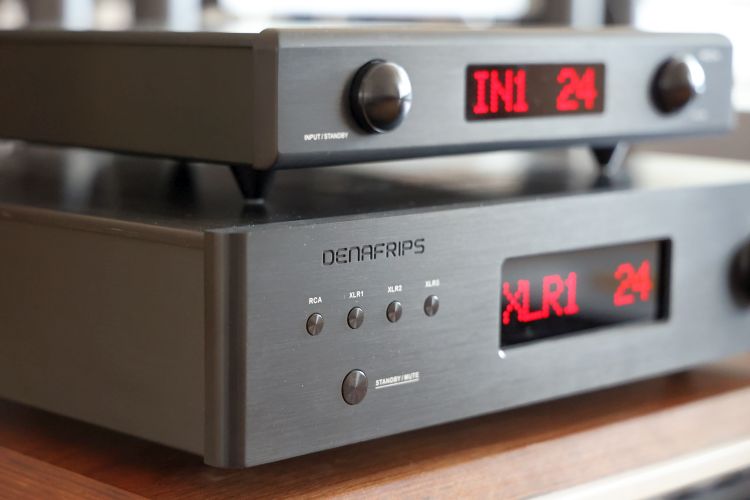
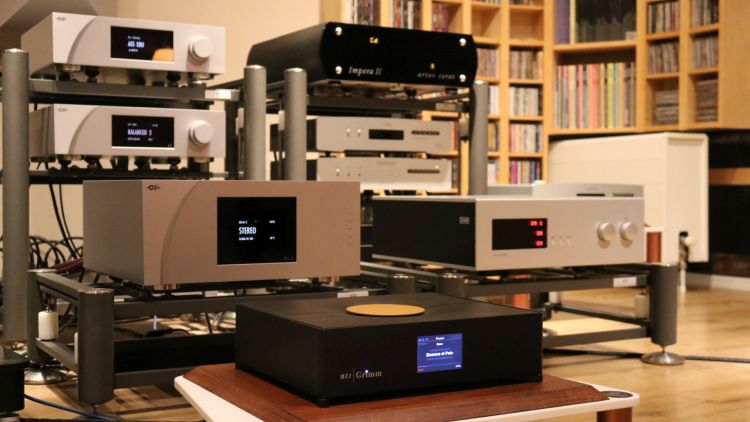
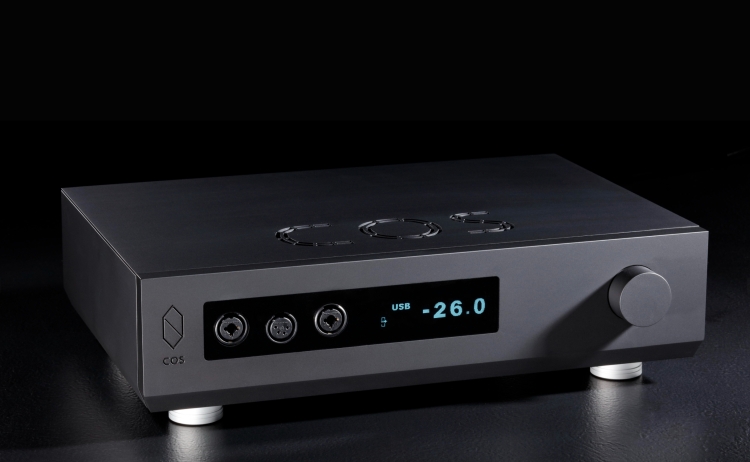
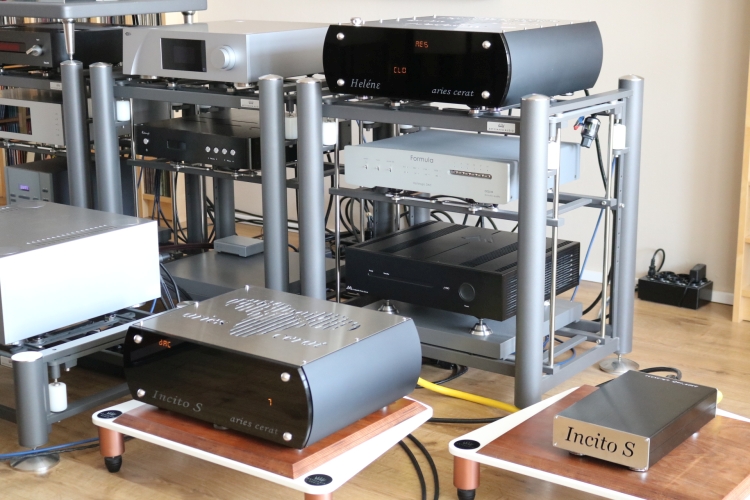
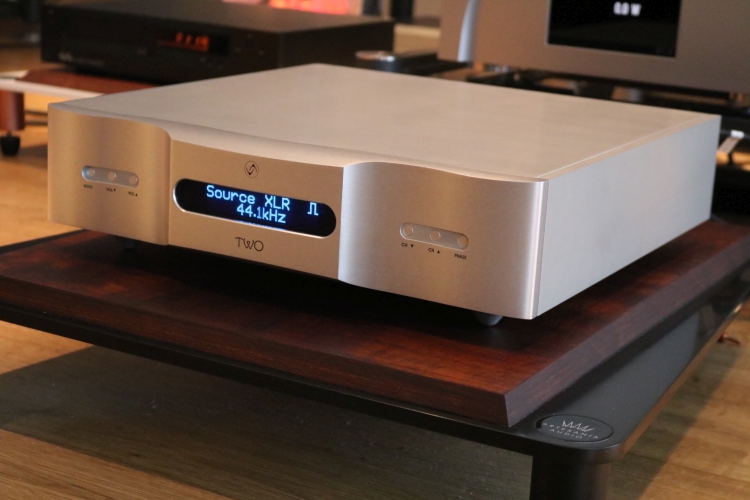
I owned the Accuphase C3900 solid state preamplifer, then replaced this with the tube Nagra HD Preamp HV. With the Nagra, there is a significant improvement in bass quantity and quality (for example bass textures), amongst other improvements.
It seems as if the “old saw” about tube units lacking bass when compared to their solid state counterparts (at least for preamplifiers) is no longer valid at the top level.
Dear Christiaan,
thanks again for the exciting review about the two Aries Cerat preamps. Like yourself I use a CH Precision C1 as DAC and as a preamp. Your review about the L1 especially in combination with the X1 got me thinking to get them if an occasion arises. Also I’m wondering why you still use the C1 alone without a L1 or even a X1. From what I read in your review you were quite impressed about the L1 especially with the X1 in your chain.
Now I have the chance to get a used L1 plus X1 with two regulator boards for a very reasonable price (it’s around the list price of the Impera II Ref). But after reading your review about the Incito S and especially the Impera II I’m unsure which way to go – L1+X1 or Impera II. Or maybe stay with the C1 alone like yourself. Unfortunately I’m not able to listen to either preamps to get to the right decision. I already searched the Internet about useful messages and other reviews. What I found is high praise for both brands. And the system synergy was mentioned a lot particularly with a complete CH Precision chain, but also with a Aries Cerat chain. So I was hoping you can help me with your vast experience to find the right perspective for a decision.
My YG speakers are quite power hungry, I guess a future amp will be rather from CH Precision than from Aries Cerat. But even with your C1 and A1.5 and the system synergy in mind would you still prefer the Impera II against L1 + X1 in your chain?
Thanks in advance for your insights
Michael
Hi Michael, meanwhile, among others as a result of a series of improvements to my room acoustics that resulted in tighter bass and a cleaner, more precise, and more neutral sound overall, I have changed my original opinion of the C1 relative to the C1 + L1 and I am now I am actually using the L1 with the C1.
As you mention, both brands receive high praise, and that’s well deserved. It will come down to user preferences. Basically, the Impera is not as tight and precise (across the frequency range but for me most noticeable in the bass) as the L1 but the L1 is less spacious and free-flowing, and not as majestic or emotionally involving as the Impera and Incito S. The X1 will move the L1 closer in terms of intimacy and flow, but at the cost of some precision. Even now having had both the L1 and the Impera side by side for a prolonged period, I find that the decision between the two comes down not only to taste but also depends on my mood.
System synergy can definitely be a thing, but it is not sacred. In the end, it is about balance. CH works splendidly with AC and vice versa. As a great example, Ron Ploeger of Callas Audio loves his Aries Cerat Genus power amp but he also reports great synergy using his Aries Cerat front end with Concert Fidelity mono power amps. The one amp offers richness and romance, the monos offer clean neutrality but with musicality. He likes both.
Given that you have YG, I would definitely not recommend using a tube power amp.
Hi Christiaan, thanks a lot for your very helpful reply. And wow, that’s a surprise that you use a L1 again in your system. Thanks for your personal thoughts about both preamps, it’s surely quite nice to be able to exchange such fine preamps depending on your mood ;-). But I understand what you mean. I think I’ll go with the L1 and report back.
All the best
Michael
Hi Mike,
How is your finding with L1? Thanks
Kevin
We have compared Aries Cerat Impera II to Atma Sphere MP-1. They are in the same price range. MP-1 was (hugely) better, much more natural, greater transparency, more body, better middle range… well, the difference was not small.
Hello sir,
how are you?
i am reading your reviews for long time now and always enjoy them immensely .
i just read some of your impera II review and i saw you connect it to your main system that contain mainly with CHP equipment.
also i read this that you wrote –
On a related note: I am currently reviewing the Impera II with the CH A1.5 power amp and while this pairing results in a little too few volume steps down below, the sound is simply breathtaking. Indeed, quite something else than the CH L1, or any other preamp that I have heard, be it solid-state or tube.
if i can ask what do you mean in saying- “little too few volume steps down below” ?
does the impera II is perfect paired with the CHP amps? or does you had to change gains or other settings?
i saw you also had the incito s low gain, can you point about it also with pairing with the A1.5 please?
im not asking sound wise the different between the two AC, that i understand completely from your review but the technical condition with the CH equipment with the AC between them.
also if you have some comments about the AC pre amps v.s the CHP L1 i will be happy to hear your thoughts.
thank you very much!
Hi Aviad, good to read that you like my reviews! The Impera had a very high output gain which means that the positions in the lowest range of the volume control were basically very loud – loud – rather quiet – off, instead of multiple small steps. But one can custom-order the gain. This unit was just not ideal for the CH power amp. Nevertheless, I found it to sound really fantastic.
With the Incito S, this was considerably less of an issue, although it, too, had only a few steps below the level that I am comfortable with. So, if I were to order an AC preamp for use with the CH amp, I would get a lower gain version.
Of course, you can lower the gain on the CH A1.5 but that changes the sound, it makes it less tight and expressive. It’s just not ideal, entering with a very high gain, then attennuating the gain again.
Regarding AC preamps versus the CH L1, please see my extensive review here: https://www.hifi-advice.com/blog/am…g-preamplifiers-in-a-digital-streaming-world/ Basically, I really like both, for different reasons, as they are very different.
Hi,
I too have read your reviews for some time, always enjoying your thoroughness and shall we say reliability of your writings. Some things are worth describing completely and I never finish an article of yours wondering still what a component sounds like.
I would like to follow up on this question of gain with another question as I am considering purchasing an Incito S preamp. Clearly it will depend on the gain of the particular paired amp, but what would you estimate the dB increment to be between steps as you adjusted the volume? I prefer 1 dB steps or less and plenty of them if possible. I also prefer a readout of my volume which does not appear to be a feature with AC preamps as far as I can tell. Please correct me if I am wrong. Do you think the Incito S was close to 1 dB steps or was it more like 2 or 3 dB steps?
Your help with this matter is very much appreciated! Keep up the amazing work with the insightful reviews.
Cheers,
Christopher S
That’s very nice to hear, Christopher! The Incito S has a volume level display. It may not indicate actual dBs but it is very useful for finding the right level and re-finding it after adjusting. The volume steps differ in size depending on the volume level. At the very lowest levels they are quite large, a few dB I would guess. When the power amp has too much gain, that’s when you run into the steps being too large. But further up in the range, they are much smaller (probably indeed close to 1dB) and that worked well for me. Please note that the Aries Cerat preamp gain can be specified by the user when purchasing new. That way, you should have the ideal match.
Thank you Christiaan for your detailed and quite helpful response!
Dear Christian,
I have always been a fan of CH Precision since they first came out and I heard the C-1 DAC, with the original M-1 amp and L-1 pre-amp which I heard at Audio Arts in NYC. I lack financial resources more than most but still want to put a system together that is simple and sounds exceptional. I currently use a very old YBA -3 pre amp with a CHP M-1.1 amplifier and have an opportunity to replace the pre-amp I purchased the CHP amp used from Worldwide Wholesales distributer of Aries Cerat for Canada and the USA who I believe you would be familiar with. I read your reviews on the CHP L-1, as well as the Aries Cerat Impera and Incito-S. I have a pair of spkers that I can use for a direct trade for the Incito-S or for an additional 9k get the Impera new or if a used Impera becomes available and additional 5K. The Impera used + 5k (4k) would be preferred).
I also can purchase a CHP L-1 for 18k or so…..
your quote Christian (there was always a penalty either in terms of pacing, dynamics, bass control, transient speed, or transparency or even in all of these aspects (I dont want to lose these characteristics at all as i love these) Granted, with the Impera, you also get a tonally fuller, and slightly enriched delivery that I don’t feel is strictly 100% neutral or linear. However, for a change, all of the benefits come without any penalties.)
From reading your commentaries on the CHP L-1 and A-1.5 and also the A. Cerat Pre-amps in addition to the C-1 and C-1.2 DAC I have as close to the same taste in electronics as yourself as I could possibly have as far as I can tell. I want the speed, dynamics, control, detail etc etc just as you describe what you like with all the naturalness etc..would love to add the C-1.2 DAC …
So I think I would like to buy the A.Cerat Impera used so I could have the most impactful, dynamic…..etc.sound possible…I am afraid to lose the control and dynamics attack, slam etc that I love about solid state. I think I would like the 10 series pre-amo by CHP best but I think the A.Cerat Impera would be the best I could do on my budget. Would still consider the L-1 but think the ACerat Impera would sound better to me overall and would be 26k invested vs 21k for the Incito-S. Also I have T & A Solitaire CWT 1000 speakers
So I am planning on trying to wait for a used Impera and think it would be well worthwhile vs the Incito-S for most musical enjoyment. Owning the L-1 and hearing the other two do you think this would be correct ? Thank You.
Bill
Hi Bill, With the AC Impera, you’ll have the most dynamic and impactful sound that I have heard yet from a tube preamp, in addition to what you can expect in terms of positives from a good tube preamp such as harmonic richness, flow, and bloom. The CH L1 is not actually any more dynamic or impactful than the Impera but it is more linear and transparent and a little tighter and more articulate. And of course it is not a tube preamp, although it is most certainly also not typical solid-state-like. The more I use it, the less it makes itself heard, just like with the A1.5 power amp. It is so utterly self-affacing that it simply blends in and that is exactly what I want. Others might desire more character and any AC preamp will most certainly provide that. I’ve heard various 10 series CH components at shows but I have yet to hear an A-B comparison. As such, I still don’t know for sure how the 1 series compares. Thus, I can also not tell you how much better the L10 would perform compared to the L1. Between Impera and Incito, it is, in a way, a decision between ultimate refinement similar to what the L1 can do, and a less subtle, but more textured and visceral sound. If you can, I would suggest trying an Incito S first, live with it for a while, and decide from there if you need a shift in presentation.
Hi Christiaan
Your feedback is very much appreciated! I love how you describe the sound of the L-1. I believe I would be more satisfied with the sound of the L-1 after reading what was written above. I am not sure how I will proceed yet. I may consider a CHP DAC with the CHP M 1.1 as I currently do not have a separate DAC. Everything I had read previously only one person was satisfied with the DAC-to AMP combo without a pre-amp. I use a Electrocompaniet blu-ray player which for is price point is a good value and works well but of course can not play music in a higher end system. The idea of buying a used CHP 1.2 DAC and using it as a controller sounds like it might be a better way to go as I can not afford a high quality pre-amp and DAC. I would be very excited to do this because getting any of the pre-amps mentioned I would be without a capable DAC and hence can not really play and enjoy music with any reasonable satisfaction.
Warm regards
Bill Emery
Hi Bill, The C1 and C1.2 DAC are still my personal favorites and even without preamp, they belong to the best DACs I heard. That said, I’m afraid there’s ultimately no beating a preamp if you want maximum fluidity, flow, and refinement. But I agree it is good to get the basis right. And you can always add a preamp later:-)
Understood, very, much appreciate your reply. This is an understatement. Thank you!